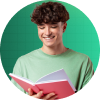
J.D. Salinger's classic work, "The Catcher in the Rye," has captivated readers for years with its heartbreaking examination of adolescent turmoil and disappointment.
The novel, told through the eyes of Holden Caulfield, a bitter and expelled prep school student, explores themes of loneliness, loss, and the search for identity. To help us travel this complicated story, let's make a mind map of Holden's journey and break down the Catcher in the Rye plot summary.
Catcher in the Rye Overview: Mind Mapping the Ambiguity of Holden's Future
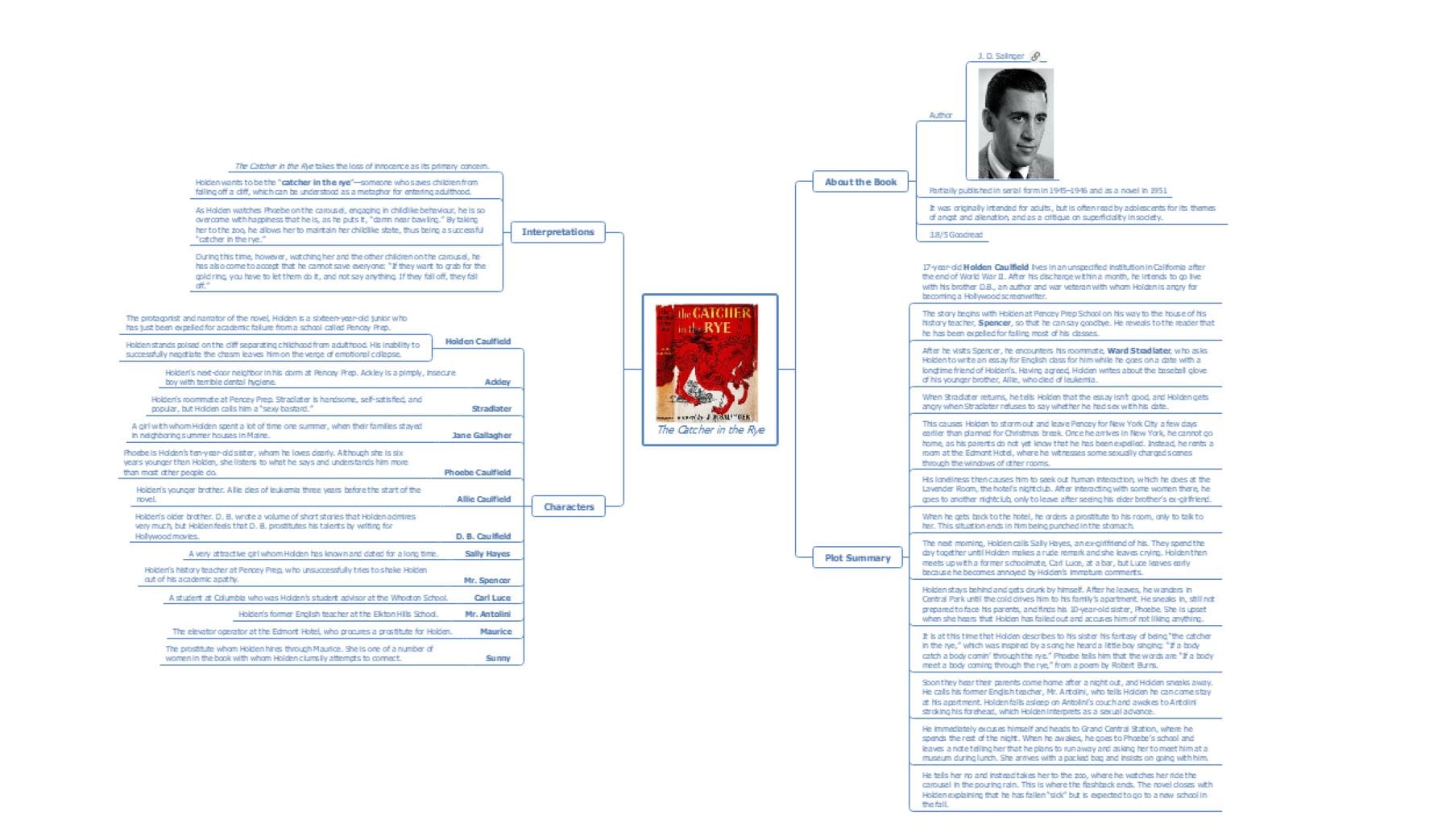
J.D. Salinger's The Catcher in the Rye is more than a novel; it's a cultural classic, a window into teenage anguish and a literary conundrum that has sparked controversy for decades.
Published in 1951, it sparked outrage with its uncensored depiction of the protagonist, Holden Caulfield, a cynical and expelled prep school student exploring New York City in the days leading up to Christmas.
Through Holden's harsh and frequently untrustworthy narration, Salinger offers a heartbreaking portrayal of teenage isolation, rebellion, and the quest for identity. Holden Caulfield At the heart of the mind map is Holden, our untrustworthy narrator. He's a tangled web of conflicts: skeptical but longing for connection, judgmental yet emotionally empathetic, passionately clinging to innocence while revolting against it.
His internal battle propels the story, and his distinct style, laced with slang and digressions, offers a realistic picture of his emotional state. Expulsion and Wanderings The map expands to include Holden's expulsion from Pencey Prep, representing his disillusionment with the falsehoods and hypocrisy he sees in the adult world.
His following wanderings through New York City become a physical reflection of his inner turmoil as he seeks solace in temporary encounters and self-destructive behavior. Relationships Moving on, we meet the people who influence Holden's journey. His late brother, Allie, embodies the innocence and purity he desperately wishes to maintain.
Jane Gallagher, his classmate, exemplifies the genuine relationship he seeks yet fears. Other characters, such as Stradlater, Sunny, and Sally, play as foils, bringing out different facets of Holden's personality and the complexity of human connection. Loss and Grief A dark branch digs into the theme of loss, namely the death of Allie. This event leaves a long shadow on Holden, increasing his skepticism and fear of maturity.
His anguish presents itself in various ways, from his infatuation with the ducks in Central Park to his wish to be a "catcher in the rye," shielding children from the unavoidable fall into despair. Search for Meaning A central branch represents Holden's never-ending search for meaning and authenticity. He regularly criticizes the "phoniness" he sees around him, although his actions frequently conflict. This internal fight represents his adolescent confusion and desire for a more authentic life. Mental Health A delicate branch explores Holden's mental state. His unstable behavior, paranoia, and suicidal ideas point to deeper concerns, including depression and maybe post-traumatic stress disorder. This aspect deepens his character and highlights concerns about cultural influences and difficulty managing puberty. Ending and Openness Finally, the mind map leads to the book's open-ended ending. Holden's take at the psychiatric facility gives the reader more questions than answers. Is he healing? Will he find peace? The uncertainty represents Holden's multifaceted personality and the general challenges of puberty.
Benefits of Summarizing a Book with a Mind Map
Here are some advantages of utilizing a mind map to explain Catcher in the Rye summary:
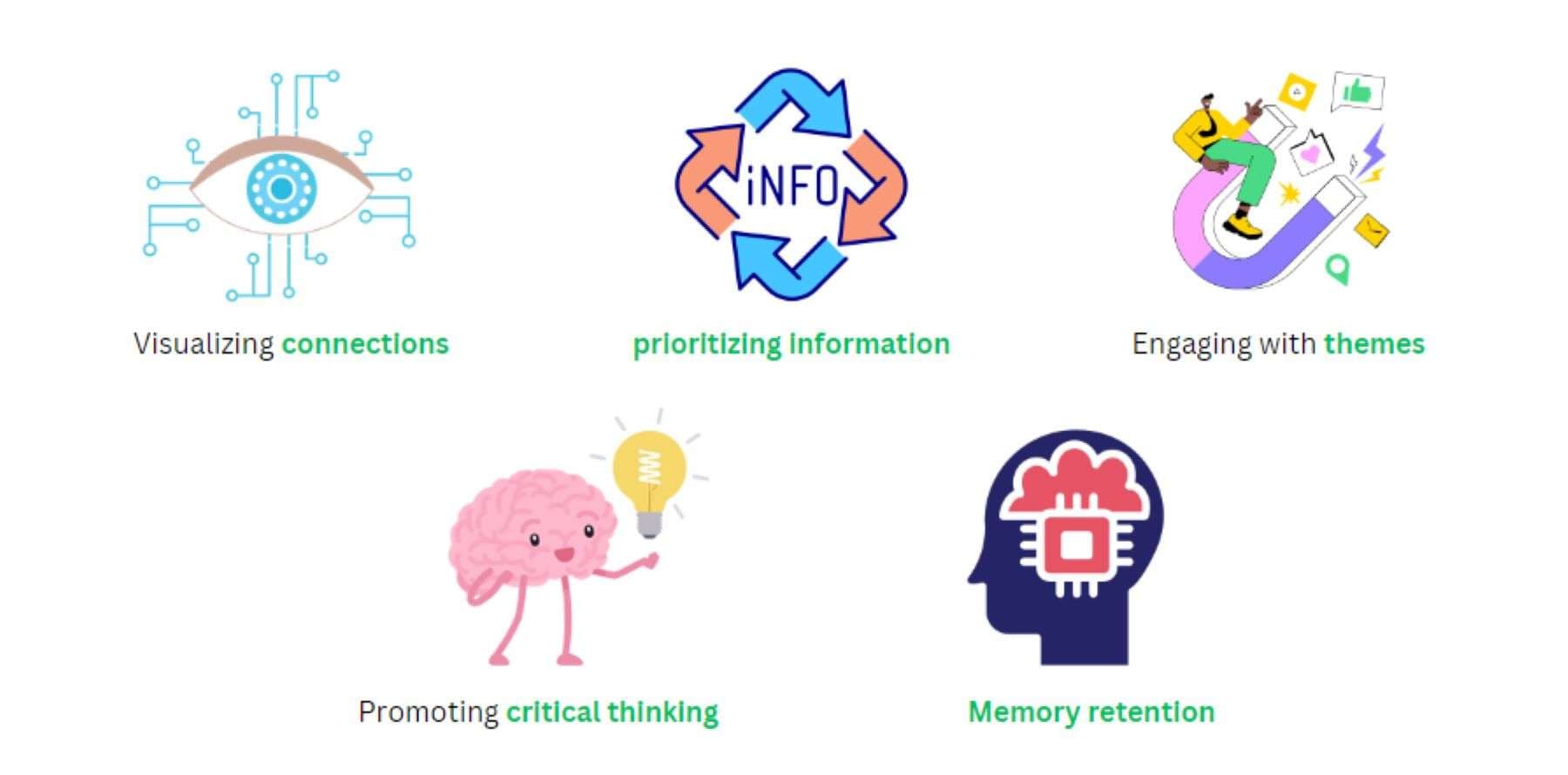
1. Visualizing Connections A mind map's non-linear format allows it to visually express the book's complex web of characters, events, and themes.
Seeing everything laid out lets you easily see connections and patterns that standard linear summaries might overlook. This lets you see the larger picture and how each aspect adds to the story.
2. Prioritizing Information A mind map helps you organize information by centering and spreading essential concepts with supporting facts.
You can immediately identify the main themes, plot points, and character motives, giving you a solid comprehension of the overall story. This is especially useful for remembering key information in a book as complex as "The Catcher in the Rye."
3. Engaging with Themes You actively engage with the book's topics while creating your mind map. You'll recognize reoccurring themes like grief, isolation, and the search for meaning and observe how they appear throughout the story.
This in-depth study promotes a more comprehensive understanding and allows you to make your conclusions and connections.
4. Promoting Critical Thinking The creative process of creating a mind map promotes critical thinking. You will analyze the material, categorize information, and draw connections to improve your critical thinking skills.
This active participation encourages a deeper knowledge of the story and allows you to create educated judgments.
5. Improve Memory Retention Studies have shown that visual information is absorbed and stored more effectively than text alone. With its visual architecture and obvious hierarchy, a mind map is an effective memory aid.
Revisiting your mind map allows you to easily recall significant story points, character development, and thematic points, reinforcing your grasp of the novel. Using a mind map for the summary of Catcher in the Rye, you can better understand and appreciate it. From visualizing connections to actively engaging with themes, this tool enhances your reading experience and allows you to explore the depths of this classic book.
How to Make a Book Summary Mind Map with EdrawMind
To make a mind map of a book synopsis with Edrawmind, follow these steps:
Step 1. Log in to EdrawMind with your social media account credentials. You can also use the details of your Wondershare account.
Step 2: Click +Create on the top left, and choose between Local Mind Map or Cloud Mind Map.
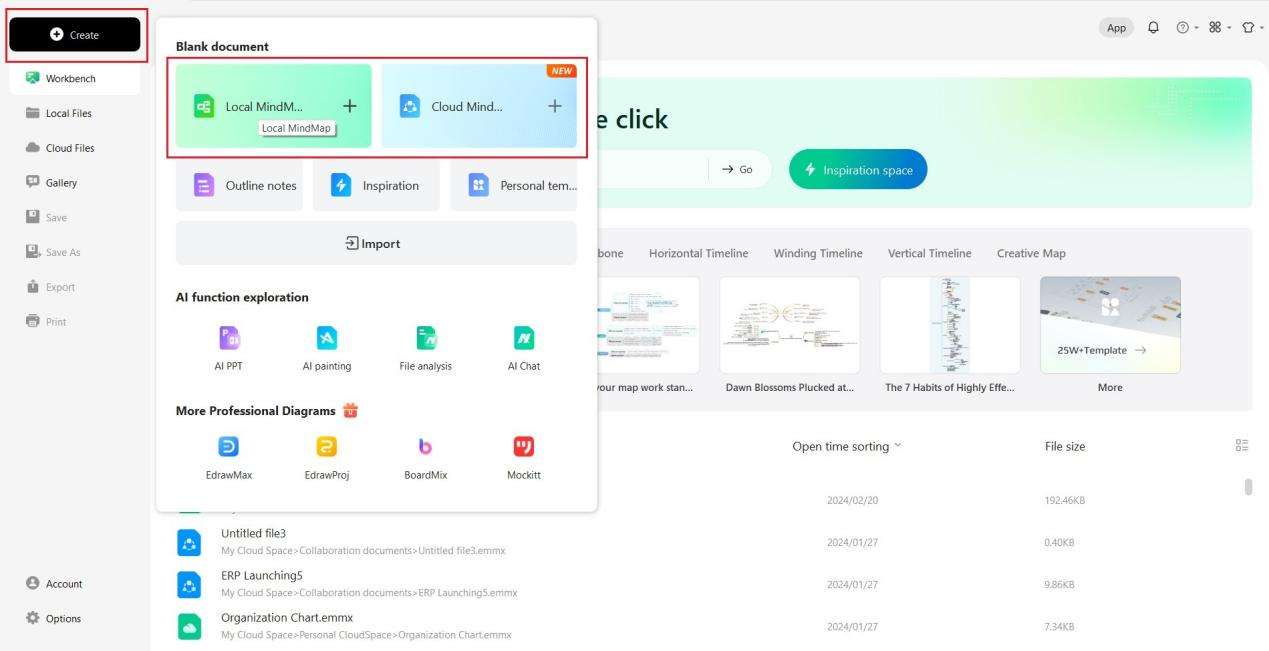
Step 3: Add the book's central concept in the center of the map. You can also add the book title or author (with the book's name) or a picture of the book cover at the center.
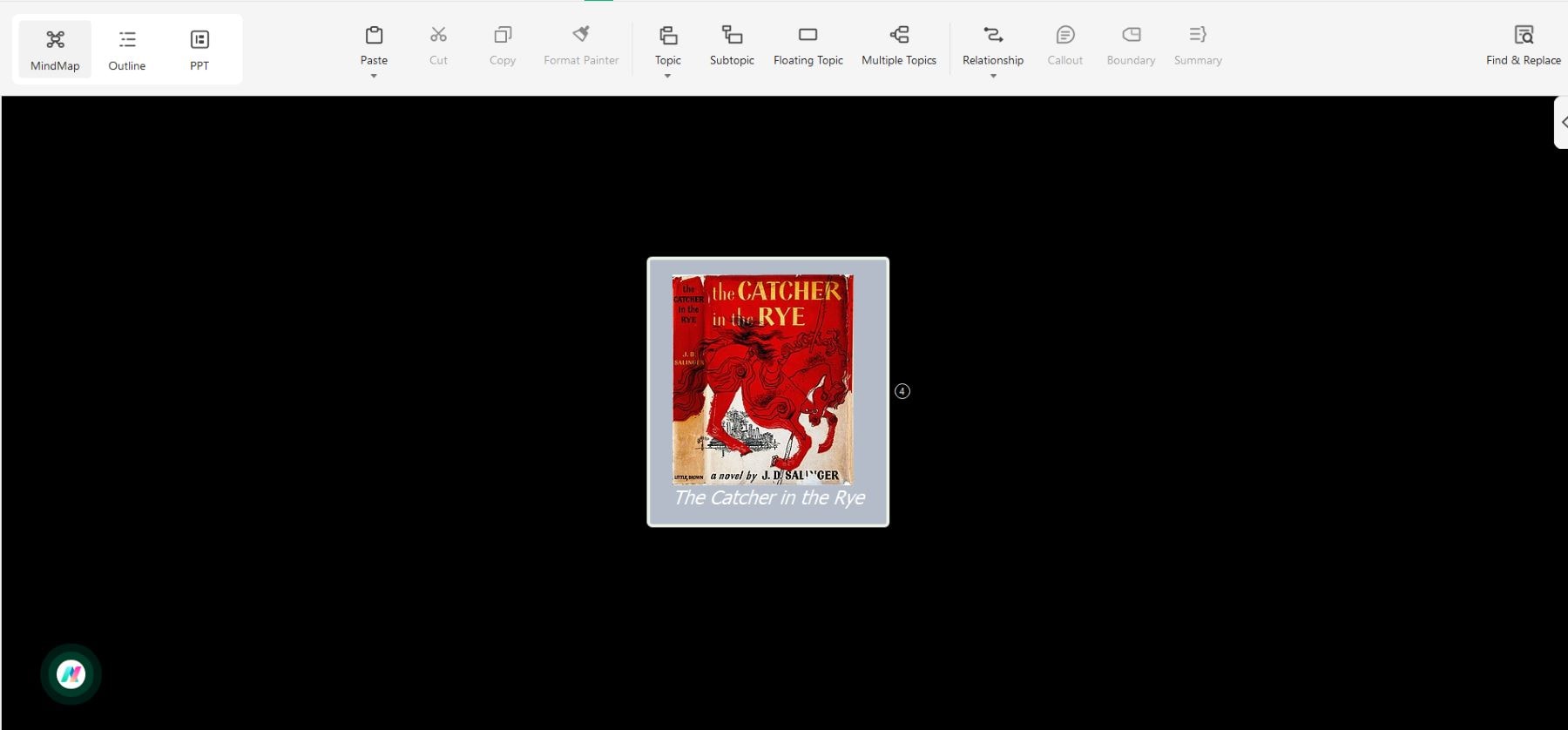
Step 3: Now, add the subtopics and outline the book's structure using concise keywords for sub-concepts for which you would like to add descriptions. You can do this by clicking on the main topic and selecting Sub-topic from the top menu.
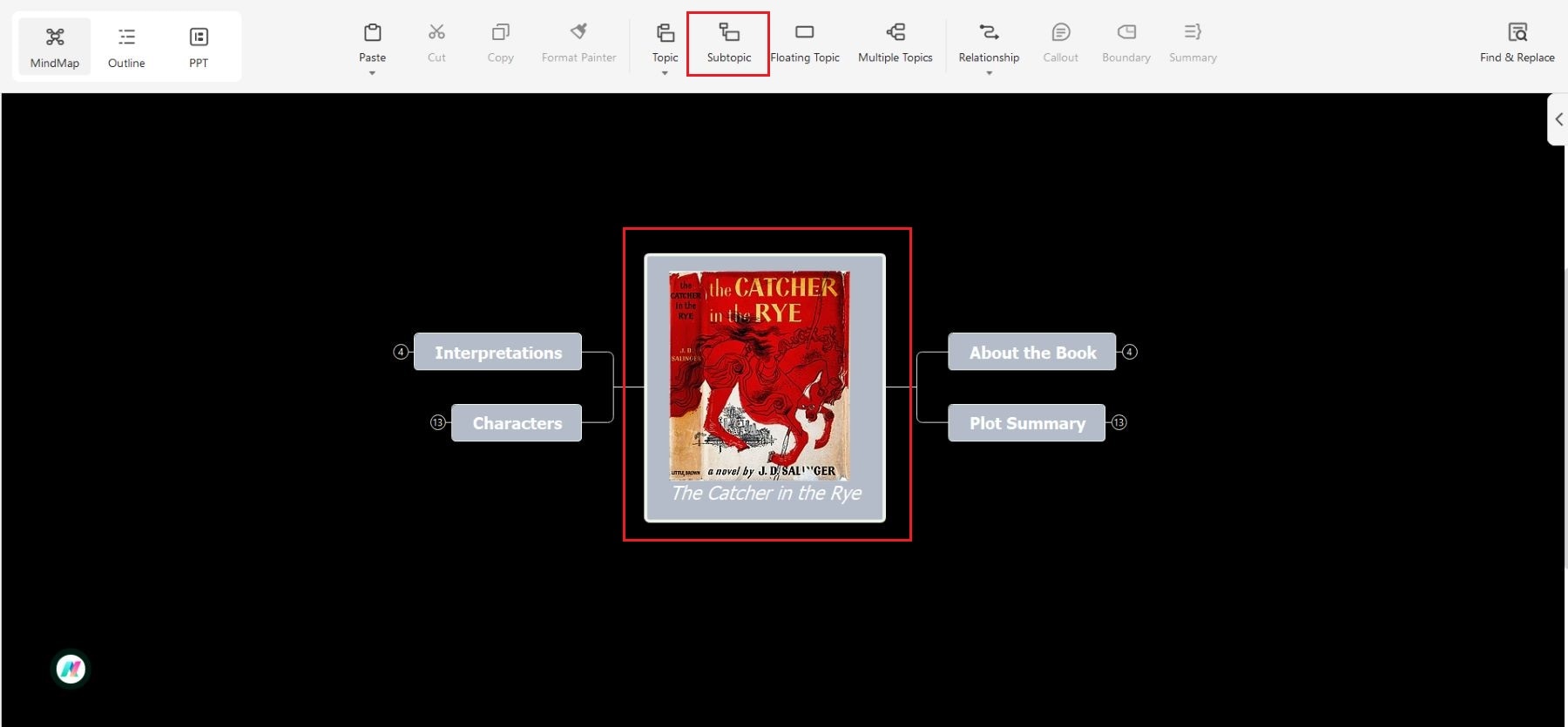
Step 4: Now, add descriptions for each concept and expand your mind map.
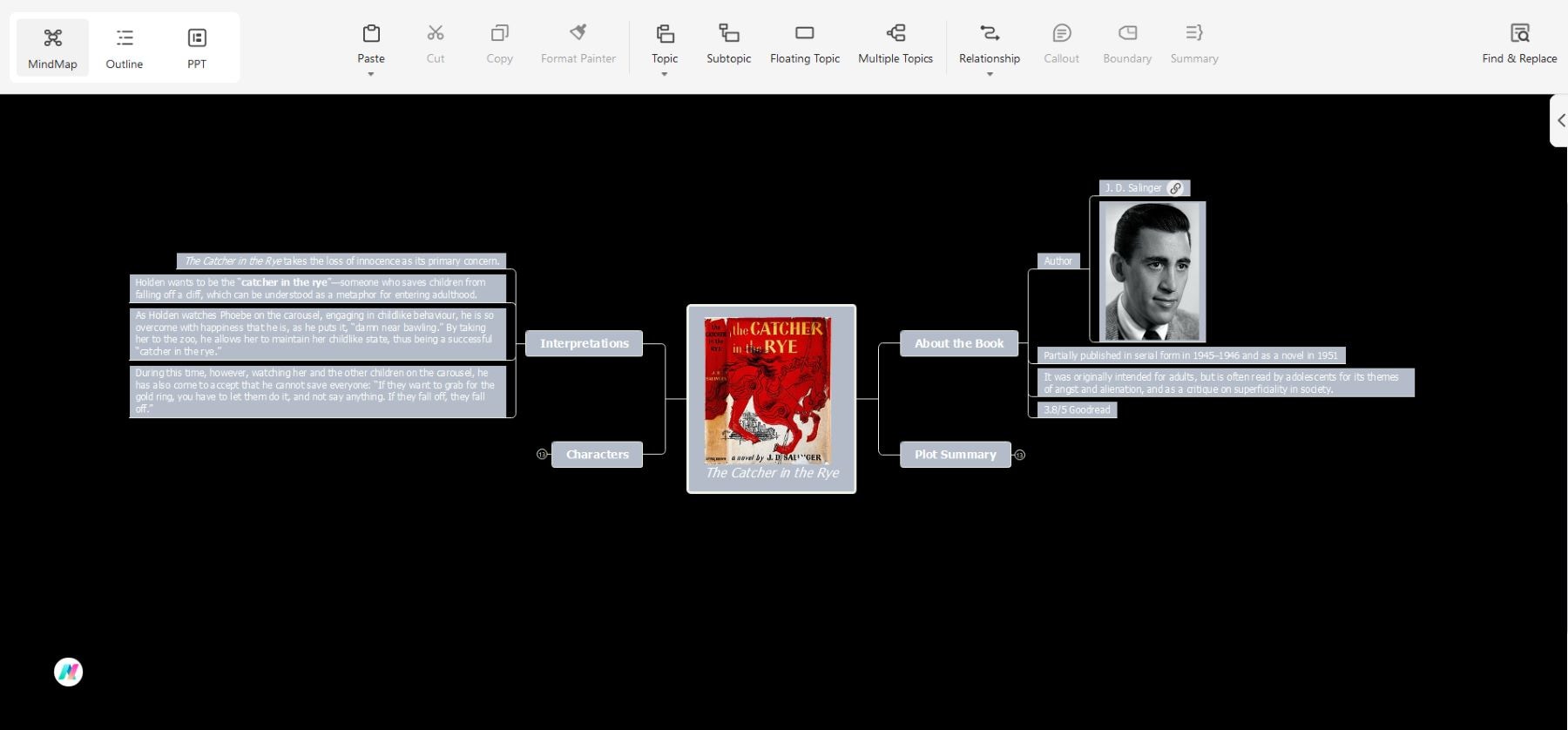
Step 5: Enhance the visual appeal of your mind map to further engage with the content. Experiment with different themes, colors, background images, symbols, fonts, and effects to visually stimulate the mind map.
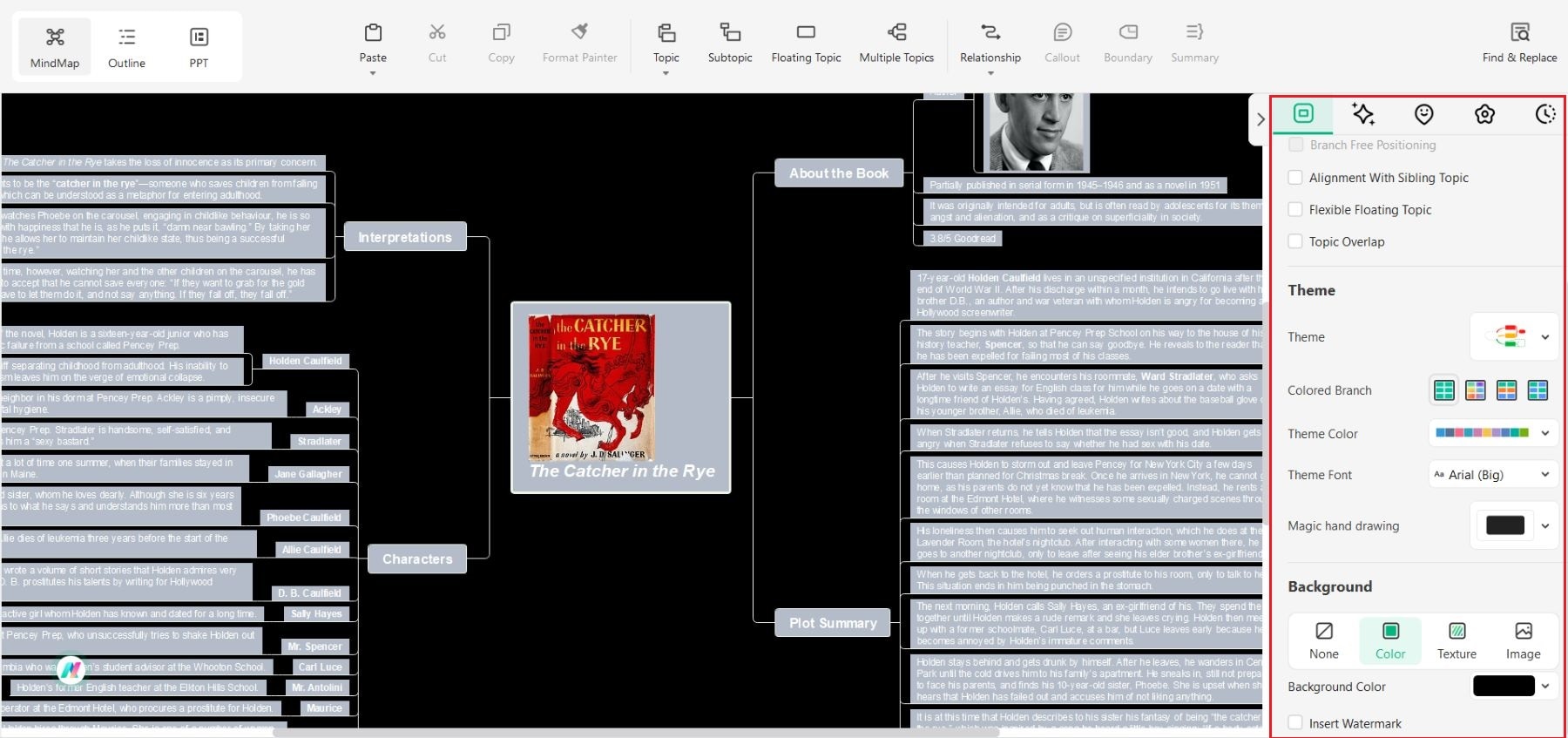
Step 6: Share it online or offline once it is complete. You can distribute it among friends, colleagues, or fellow readers or save it in PDF, graphics, or MS Word formats. Sharing your mind map facilitates discussion and comprehension of the book's summary.

A Free Note-Taking App: EdrawMind
While EdrawMind offers a fantastic platform for creating mind maps summarizing books like "The Catcher in the Rye," it's just one tool in Edraw's arsenal. Consider EdrawMind, a free online tool with features for more versatile note-taking and mind-mapping needs.
- Simplicity at its Core: EdrawMind boasts a user-friendly interface, making it accessible even for beginners. No steep learning curve here! Drag-and-drop functionality and intuitive tools allow you to capture your thoughts and organize them visually quickly.
- Beyond Mind Mapping: While mind maps are EdrawMind's forte, it goes beyond. Create flowcharts, diagrams, timelines, and more to represent complex ideas visually. This versatility makes it ideal for various note-taking needs, from brainstorming sessions to project planning.
- Seamless Collaboration: Need to work with others? EdrawMind allows real-time project collaboration, perfect for brainstorming sessions or group projects. Share your notes and mind maps with ease, and witness ideas come to life together.
- Cross-Platform Accessibility: Access your notes and mind maps from anywhere, anytime. EdrawMind is available online and on various devices, ensuring your ideas are always at your fingertips.
EdrawMind Working Modes
EdrawMind isn't just a single tool; it's a versatile platform that adapts to your needs. Here's a glimpse into its different working modes:
1. Outline Mode: Embrace a structured approach with the Outline Mode. Perfect for note-taking, it organizes information into hierarchical lists, making it easy to follow complex ideas and track key points.
2. Mind Mapping Mode: Unleash your creativity and explore connections with the Mind Mapping Mode. This visual format allows you to brainstorm ideas, organize information organically, and identify patterns, making it ideal for planning projects or tackling complex problems.
3. Presentation Mode: Ready to share your work? Switch to Presentation Mode and transform your notes, diagrams, or mind maps into clear and engaging presentations. This mode ensures your ideas are communicated effectively, leaving a lasting impression on your audience.
EdrawMind Key Features
EdrawMind empowers you to explore your ideas and express them visually with a range of key features:
- Import Flexibility: Seamlessly bring your existing work into EdrawMind. Import files from various sources, including Markdown, Xmind, Mindmanager, and more, ensuring a smooth transition from your preferred platform.
- Exporting Made Easy: Share your creations effortlessly. Export your diagrams, mind maps, and notes in multiple formats like Graphics, PDF, Word, Excel, PPT, HTML, SVG, MindManager, or TXT, catering to different needs and platforms for sharing or further editing.
- Template Library: Jumpstart your projects with a vast library of pre-designed templates. Choose from hundreds of professionally crafted options for flowcharts, organizational charts, mind maps, diagrams, and more, saving you time and effort.
- Extensive Symbol Library: Enhance your visual storytelling with a rich library of symbols and clipart. Find the perfect icons to represent concepts, processes, and data points, making your creations clear, engaging, and visually appealing.
- AI-Powered Assistance: Leverage the power of artificial intelligence to streamline your workflow. EdrawMind offers AI-powered features like smart drawing tools, content suggestions, and even AI-generated diagrams, helping you easily create professional-looking visuals.
Three compelling reasons to try EdrawMind
Here are just a few reasons why you should give it a try
1. Easy Navigation
No more fumbling with clunky interfaces. EdrawMind is a straightforward and beginner-friendly interface that lets you start immediately, regardless of your technical skill level. Drag-and-drop capabilities and clear menus make for a smooth and pleasurable experience.
2. Cost-conscious Creativity
Maximize your creative potential without breaking the bank. EdrawMind provides a strong free edition that includes vital functionality for most users. Upgrade to subscription plans only if you require additional features like offline access or cloud storage, making it an affordable option for individuals and organizations.
Review the official EdrawMind price page to get all the current facts and determine which plan is right for you.
3. Improve Your Efficiency
Time is valuable. EdrawMind's efficient tools help you make the most of it. Create mind maps, diagrams, and flowcharts quickly, organize your notes easily, and interact with others in real time. Say goodbye to boring jobs and hello to a more efficient workflow.
The fundamental mind-mapping and note-taking capabilities of EdrawMind are available with the free plan. Nevertheless, premium plans are designed to meet the different needs of users looking for greater functionalities and particular rewards.
Bottom Line
Analyzing the complexity of "The Catcher in the Rye" requires a tool that encourages interaction and better comprehension. With the help of EdrawMind's free mind mapping program, you can explore topics such as isolation, loss, and Holden Caulfield's search for purpose while charting his path artistically.
Expand on Holden's central persona by relating him to important characters and story points to understand the story comprehensively. Use EdrawMind to map your learning rather than merely summarize it. For a more comprehensive learning experience, consider EdrawMind, a versatile note-taking and diagramming platform. Go beyond mind maps and leverage its rich features to create outlines, flowcharts, and presentations, solidifying your understanding and enriching your analysis.
